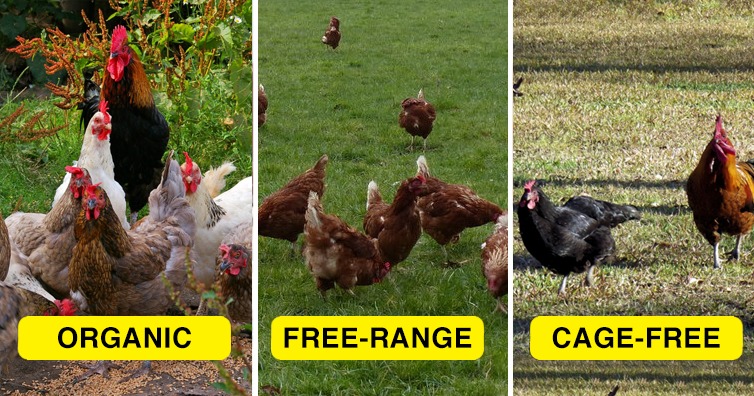When it comes to eggs, we all want to buy the best quality product – the one that’s healthiest for you, the chickens that laid them and of course, the environment.
But the truth is that with all those labels out there, the lines are a bit blurred as to what each category represents. I mean, what’s actually the difference between ‘free range’ and ‘cage free’ eggs?
Well, we got you covered – because we did a bit of research in order to clarify things out. Here are our findings on two of the world’s largest markets – the US and the EU. For other countries, please note that the definitions may somehow differ: (the article continues after the ad)
ORGANIC EGGS
In order for the eggs to be certified organic, the hens must not be raised in cages, should have access to outside and only be fed organic feed, free of animal by-products (such as ground bones or egg shells). In addition, no hormones, antibiotics or other drugs can be used as preventative measures but only in the case of illness.
Their beaks can be trimmed and vaccinated in order to protect the entire flock, however, only natural molting is allowed (the process in which birds replace their feathers which extends their laying period and is often forced by farms for economic reasons).
CAGE FREE EGGS
Cage free eggs are laid by hens that are fed regular chicken feed (not organic), they are given antibiotics and are free to roam within the area during their laying cycle. Their beaks can be trimmed and vaccinated while there are no guidelines regarding forced molting.
According to the USDA: “Eggs packed in USDA grademarked consumer packages labeled as cage free must be produced by hens housed in a building, room, or enclosed area that allows for unlimited access to food, water, and provides the freedom to roam within the area during the laying cycle.”
EU guidelines are more strict, as raising cage-free hens requires the following: “One nest per 7 hens, with a maximum density of 9 hens per usable square meter in the barn, 45cm between each tier if a multi-tiered barn system is used and 15cm of perch space and 250 square centimeters of litter per hen.”
FREE RANGE EGGS
Cage free eggs are laid by hens that are fed regular chicken feed (not organic), even though their diet also consists of green and and insects which they consume from their outdoor roaming. They are given antibiotics and have access to the outdoors during their laying cycle. Their beaks can be trimmed and vaccinated while there are no guidelines regarding forced molting.
According to the USDA: “Eggs packed in USDA grademarked consumer packages labeled as free range must be produced by hens housed in a building, room, or area that allows for unlimited access to food, water, and continuous access to the outdoors during their laying cycle. The outdoor area may be fenced and/or covered with netting-like material.”
In addition to the above, the EU legislation calls for each bird to have 4 sq.m outside, with unrestricted access throughout the day. This means that chickens come run outside whenever they feel like it, something that contributes to the health and happiness of the birds.
So now you know!
If you like what you read, then you will definitely love this one: This Is The Difference Between ‘Brown Eggs’ And ‘White Eggs’
Photo: PxHere, Mat Fascione / Geograph.co.uk, PxHere
Photoshop: I’m A Useless Info Junkie
Sources: Organic vs. Free Range vs. Cage Free Eggs | EUR-LEx: Council Directive 1999/74/EC of 19 July 1999 laying down minimum standards for the protection of laying hens | Get the Facts on Organic and Free-Range Eggs | Questions and Answers – USDA Shell Egg Grading Service | Eggstra! Eggstra! Learn All About Them



